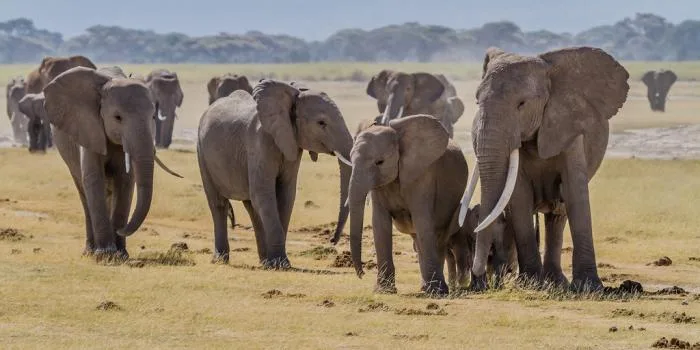A Guide for translation for Std 9 and 10 Maharashtra State Board Students.
Translation plays a crucial role in the learning process, especially for Std 9 and 10 students following the Maharashtra State Board syllabus. Many students are required to translate content between English, Marathi, and Hindi for their academic tasks. Here are some practical tips to help improve your translation skills and achieve better results in exams.
- Understand the Context
Before translating any text, make sure you have a clear understanding of the overall context. Read the entire passage thoroughly in both the source and target languages. This will help you avoid word-for-word translation errors, which can lead to confusing or incorrect sentences.
- Focus on Meaning, Not Just Words
Translation is about conveying the meaning of a sentence or passage, not just translating each word individually. Marathi and English, for example, have different sentence structures. In English, sentences often follow the Subject-Verb-Object format, whereas Marathi might place the verb at the end. Always adapt your translation to fit the grammar rules of the target language.
For instance:
Marathi: “ती शाळेत गेली.” (Literal translation: “She school to went.”)
English: “She went to school.”
- Use the Right Vocabulary
For academic purposes, using the right terminology is crucial. Look for subject-specific terms, especially in Science, Social Studies, and Mathematics. Having a glossary of important terms in both languages can be helpful. For example:
Mathematics: “Circumference” in English is “परिघ” in Marathi.
Science: “Photosynthesis” in English is “प्रकाशसंश्लेषण” in Marathi.
- Maintain Sentence Structure
While translating, pay attention to maintaining the sentence structure and flow of the original text. Ensure that your sentences are grammatically correct and clear. Avoid unnecessarily long or complicated sentences, as this can make the translation harder to understand.
For example:
Original: “The Earth revolves around the Sun.”
Marathi Translation: “पृथ्वी सूर्याभोवती फिरते.”
- Be Aware of Cultural Differences
Some words and phrases may not have a direct translation due to cultural differences. In these cases, you might need to paraphrase or explain the concept in the target language. For example, idiomatic expressions in Marathi or Hindi often don’t have an exact English equivalent and should be translated in a way that retains the original meaning.
Example:
Marathi idiom: “डोक्यावर बर्फ ठेवणे.” (Literal translation: “Keep ice on your head.”)
Meaning in English: “Stay calm.”
- Practice Consistently
Like any skill, translation improves with practice. Dedicate time to translating different types of texts—passages from textbooks, essays, and even exam questions. Over time, you’ll become more comfortable with sentence structures and vocabulary in both languages.
- Double-Check for Errors
After completing a translation, always review your work. Check for:
Grammatical mistakes.
Missing or added information.
Incorrect word choices.
Unnatural sentence structures.
Reading the translation aloud can help identify awkward phrasing or errors that you might miss when reading silently.
- Leverage Technology Wisely
There are various online translation tools, such as Google Translate, that can provide quick translations. However, these should only be used as a reference, not the final translation. Automated tools often make mistakes, especially with complex academic content. Use them for guidance, but rely on your knowledge and understanding for accuracy.
- Seek Help When Needed
If you’re unsure about a particular word or phrase, don’t hesitate to ask your teachers, friends, or even consult a dictionary. Collaboration and discussion can enhance your translation skills.
Conclusion
Translation is a valuable skill for Std 9 and 10 students, especially those navigating multiple languages. By focusing on meaning, understanding context, and practicing regularly, you can improve your ability to translate academic content effectively. Remember, accuracy and clarity are key to successful translation, so take your time and strive for understanding rather than rushing through the process
Examples of Translation
Here are some examples of Marathi to English translations, which will help you understand how to convey the meaning while maintaining proper grammar and sentence structure.
Example 1: Simple Sentence
Marathi: मला शाळेत जायचं आहे.
English: I want to go to school.
Example 2: Compound Sentence
Marathi: आज मी अभ्यास केला आणि मग मित्रांसोबत खेळलो.
English: Today I studied, and then I played with my friends.
Example 3: Descriptive Sentence
Marathi: तो एक हुशार विद्यार्थी आहे जो नेहमी वर्गात प्रश्न विचारतो.
English: He is a smart student who always asks questions in class.
Example 4: Sentence with an Idiom
Marathi: तिच्या चेहऱ्यावर हसू फुलले होते.English: A smile blossomed on her face.
Example 5: Academic Sentence (Science)
Marathi: प्रकाशसंश्लेषण हा वनस्पतींचा अन्न तयार करण्याचा एक प्रक्रियात्मक भाग आहे.
English: Photosynthesis is a process by which plants prepare their food.
Example 6: Academic Sentence (History)
Marathi: छत्रपती शिवाजी महाराजांनी स्वराज्य स्थापन केले.
English: Chhatrapati Shivaji Maharaj established Swarajya.
Example 7: Question
Marathi: तुझं नाव काय आहे?
English: What is your name?
Example 8: Complex Sentence
Marathi: जर आपण कठोर परिश्रम केले तर यश मिळवणे अवश्य आहे.
English: If we work hard, success is certain.
Example 9: Dialogue
Marathi: आई: तुला भूक लागली का?मुलगा: हो, मला खूप भूक लागली आहे.
English: Mother: Are you hungry?Son: Yes, I am very hungry.
Example 10: Expressing an Opinion
Marathi: मला असं वाटतं की शाळेत शिक्षणाच्या आधुनिक पद्धती वापरायला हव्यात.
English: I think that modern methods of education should be used in schools.
Example 11: Instructional Text
Marathi: कृपया दिलेले सर्व प्रश्न सोडवा आणि उत्तर पुस्तिकेत लिहा.
English: Please solve all the given questions and write them in the answer sheet.
Example 12: Poetic Line
Marathi: नदी वाहते, झाडं झुकतात, पाऊस पडतो.English: The river flows, the trees bend, and the rain falls.
These examples demonstrate how translation requires adjusting the sentence to fit the grammar rules of English while preserving the meaning of the original Marathi text.






